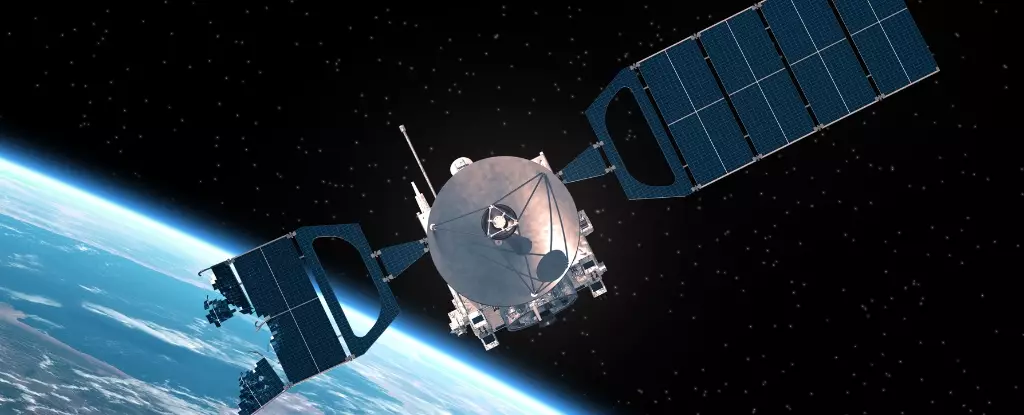The cosmos is not only a source of wonder and exploration, but it also presents potential threats that can send shivers down our spines. The recent attention on asteroid 2024 YR4 serves as a stark reminder of how vulnerable we are to the whims of space. This 60-meter-wide asteroid, initially thought to have a 3.1 percent chance of striking Earth in December 2032, has shifted the narrative from imminent impact to a potential lunar collision, with its odds of hitting the Moon increasing to 4.3 percent. Researchers, including Paul Wiegert from Canada’s University of Western Ontario, have investigated the consequences of such a collision, offering insight into a scenario that balances danger with awe.
Potential Consequences of a Lunar Impact
Should 2024 YR4 collide with the Moon, we might witness one of the most significant astrological events in 5,000 years. Wiegert’s team has proposed that the impact could generate energy equivalent to a large nuclear explosion, unleashing up to 100 million kilograms of lunar debris into space. If the asteroid strikes the Moon’s Earth-facing side—an event that carries roughly a 50/50 chance—up to 10 percent of that debris could be captured by Earth’s gravitational pull. The implications of this are significant. While Earth’s atmosphere would likely shield the surface from the fiery rock fragments, the potential for satellite destruction looms large.
Moreover, the prospect of witnessing a ‘super meteor shower’ is tantalizing. The potential for thousands of meteors streaking across our night sky could provide a visually magnificent experience for stargazers and citizens alike, yet it conceals a serious risk to our ever-increasing reliance on satellite technology. Indeed, a centimeter-sized rock traveling at extreme speeds is comparable to a bullet, presenting a tangible threat to the infrastructure that supports modern life.
Technological Vulnerability
As we stand on the brink of technological advancements that have been matched only by our growing reliance on satellite systems, the risk posed by lunar debris becomes even more pronounced. Wiegert’s projections suggest a staggering increase in meteoric activity, potentially more than 1,000 times the normal shower rate. With satellites proliferating above us at a rapid rate—many expected to orbit by 2032—the fragility of this network against falling lunar projectiles becomes a point of critical concern.
The satellites we depend on for communication, navigation, and weather prediction are now, more than ever, at risk of becoming collateral damage in this cosmic drama. If anything, this emerging scenario acts as a wake-up call for policymakers and researchers. Are we prepared for such celestial events, and how can we fortify our technology against natural phenomena that we did not cause?
A Missed Opportunity for Planetary Defense
If 2024 YR4 is indeed heading toward a collision course with the Moon, this situation may present not just a threat, but also an opportunity to test the efficacy of our planetary defense systems. Much has been learned since NASA’s DART mission successfully impacted Dimorphos in 2022, marking a significant stride in our ability to alter an asteroid’s trajectory. A similar initiative targeting 2024 YR4 could be instrumental in advancing our space defense strategy, providing invaluable data to inform future missions.
However, the clock is ticking. With the next visibility of the asteroid in 2028, there lies a dual urgency—both to assess its trajectory and to consider contingencies. The complexities involved in diverting an asteroid that poses a direct risk to Earth’s satellites and systems bring forth ethical and practical dilemmas.
Humanity’s Cosmic Responsibility
Ultimately, the conversations surrounding 2024 YR4 extend beyond mere predictions and scientific modeling; they delve into the very essence of humanity’s responsibility to protect life on Earth. As technology evolves and humanity’s footprint in space grows, we will inevitably face more cosmic threats. The question is not if we will confront such challenges, but rather how we choose to respond.
Will we act to mitigate these risks, or will we allow fear of the unknown to stagnate our innovation? The event of a renowned asteroid impact could serve as a truthful reminder of our planet’s fragility, compelling us to look closer to the stars for not just exploration and discovery but also protection. As we gear up for a potentially tumultuous encounter with 2024 YR4, it’s time to consider the balance between wonder and caution, and the profound responsibility we have to safeguard not only our Earth but the expanding tapestry of life throughout the universe.

